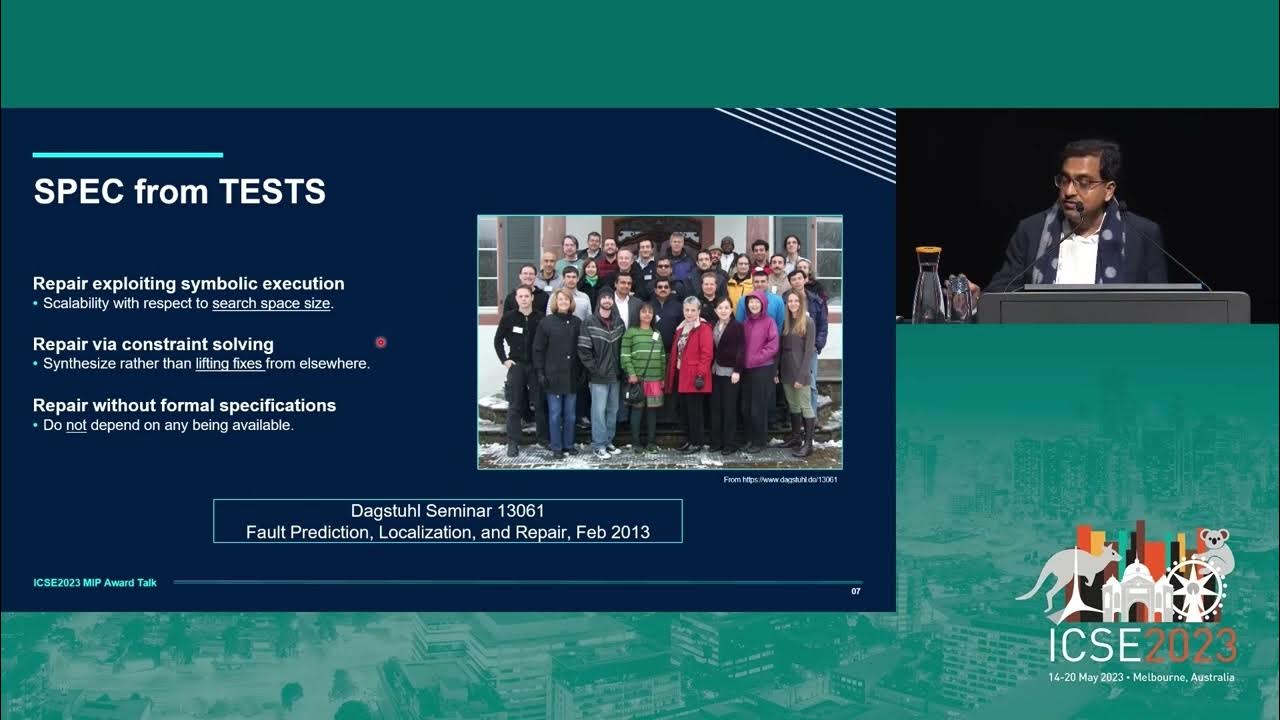The Hierarchy of Needs for Training Dataset Development: Chang She and Noah Shpak
Summary
TLDRIn this engaging discussion on training dataset development for large language models (LLMs), Chun Sha and Noah emphasize the importance of data quality and infrastructure in AI workloads. They explore the nuances of pre-training and post-training phases, highlighting the significance of clean, well-structured datasets. The conversation covers innovative techniques such as synthetic data generation, quality scoring, and the challenges of managing large multimodal datasets. They introduce the Lance format, a versatile data infrastructure designed to support fast scans, random access, and time travel capabilities, ultimately aiming to enhance research acceleration and streamline AI development processes.
Takeaways
- 🎤 The importance of training data quality is emphasized for developing effective AI models.
- 📊 Pre-training focuses on broad considerations like data domains and token quantity, while post-training hones in on specific tasks.
- 🔍 Clean data serves as a foundation for measuring AI model performance.
- 📈 Data-efficient learning is a key strategy for improving results with smaller datasets.
- 🌍 Multimodal data poses challenges due to its vastness, requiring advanced data management systems.
- 📂 The Lance format is optimized for AI, offering fast scans, lookups, and version control for large datasets.
- ⚙️ Human labeling plays a critical role in refining AI classifiers and enhancing data quality.
- 🔄 Zero-copy schema evolution allows easy modifications to large multimodal datasets without data duplication.
- 🛠️ Speed and efficiency are vital in handling the complexities of multimodal AI workloads.
- 🚀 The future of AI data systems lies in developing infrastructures that can support diverse workloads and scale effectively.
Q & A
What is the primary focus of the discussion in the video?
-The video focuses on training dataset development for large language models (LLMs) and the importance of having a robust data infrastructure for AI workloads.
Who are the speakers in the video and what are their roles?
-The speakers are Chun Sha, CEO and co-founder of Lance TV, and Noah, who leads the AI data platform at Character, a personalized AI platform.
What is the significance of data formatting mentioned by the speakers?
-Data formatting is crucial because it affects how well the model can learn from the data. A nice format helps in efficient data management and processing.
What are the two main stages of training discussed in the video?
-The two main stages are pre-training, which focuses on broad data collection from various domains, and post-training, which narrows down to specific tasks and contexts.
How do the speakers suggest improving data efficiency in machine learning?
-They suggest using techniques like data-efficient learning, sampling methods, and measuring data diversity to reduce the amount of data needed for effective results.
What challenges do the speakers highlight regarding existing data infrastructures for AI?
-The speakers note that existing data infrastructures often excel in only one aspect of AI workloads (filtering, shuffling, or streaming), but not all three simultaneously, which can hinder performance.
What features does the Lance format provide to address AI data management issues?
-The Lance format offers fast scans, fast random access, and the ability to handle large binary data efficiently, enabling better performance in AI tasks.
What is 'zero-copy schema evolution' as described in the video?
-'Zero-copy schema evolution' allows for adding new columns or experimental features to a dataset without having to copy the original dataset, making data management more efficient.
What role does human labeling play in the data management process mentioned?
-Human labeling is used to improve classifiers and to rewrite synthetic data that may have issues, enhancing the overall quality of the dataset.
What future developments are the speakers looking towards in data systems for AI?
-The speakers aim to develop faster data systems that can handle new multimodal needs, improving efficiency and effectiveness in training AI models.
Outlines

このセクションは有料ユーザー限定です。 アクセスするには、アップグレードをお願いします。
今すぐアップグレードMindmap

このセクションは有料ユーザー限定です。 アクセスするには、アップグレードをお願いします。
今すぐアップグレードKeywords

このセクションは有料ユーザー限定です。 アクセスするには、アップグレードをお願いします。
今すぐアップグレードHighlights

このセクションは有料ユーザー限定です。 アクセスするには、アップグレードをお願いします。
今すぐアップグレードTranscripts

このセクションは有料ユーザー限定です。 アクセスするには、アップグレードをお願いします。
今すぐアップグレード関連動画をさらに表示
5.0 / 5 (0 votes)






